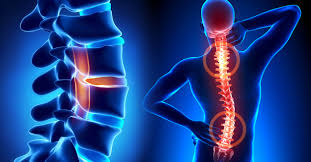 In terms of looking after ourselves day-to-day where is the lowest hanging fruit? Where are the greatest gains for the least risk to be had? Perhaps diet, but that is a whole can of worms that we’re not going to open here! More exercise, perhaps? Yes, but it is difficult to offer any specific advice other than “move more”.
In terms of looking after ourselves day-to-day where is the lowest hanging fruit? Where are the greatest gains for the least risk to be had? Perhaps diet, but that is a whole can of worms that we’re not going to open here! More exercise, perhaps? Yes, but it is difficult to offer any specific advice other than “move more”.
The easiest and most effective change to make is implementing Spine Hygiene – how to go about your day in a spine friendly manner.
Spine Hygiene is comparable with dental hygiene insofar as Spine Hygiene gives you a few simple concepts which have a protective effect on the long-term health of the discs in your back. Just like your teeth, your spine (specifically the discs) become worn and damaged over a long period of time without causing pain, and you will probably not realise that there is a problem until considerable damage has already taken place.
So what does Spine Hygiene look like?
Research tells us very clearly what postures and movements are associated with injury and pain, and conversely it tells us what postures and movements are less likely to cause problems. Spine Hygiene gives you the understanding of how to replace problematic movements and postures with spine-healthy alternatives. For a quick mental image of good Spine Hygiene, think of an athlete performing at a high level – Wimbledon perhaps, or a scrum at a rugby international. If you want a mental image of poor Spine Hygiene, think of teenagers slumping at home or as they walk, phones in hand or perhaps unskilled tennis or golfers. We can recognise ’Competent’ or ‘Athletic’ postures without necessarily understanding what gives us that impression. What we are often observing is simply good Spine Hygiene.
So what can we do to improve matters?
Most of us understand something about standing or sitting up straight, but things tend to go wrong quickly when we need to tip forwards to get over the sink, or do the house or garden work, or play our sport. There are two strategies that we can use to tip forwards; we can hold our spine and pelvis together and pivot around our hip joints, or we can ignore our hip joints and create an artificial hinge in our low backs. If we don’t use our hip joints to bend forwards, we are forced to create the movement in our low backs, and this – over time – chews up our discs. Furthermore the research tells us that lack of hip movement is strongly predictive of low back pain, and one of the defining characteristics of the Competent or Athletic performers that we envisaged a few moments ago is that Athletes create movement at the hip joints, and non-athletes create movement in the low back.
So, the biggest change you can make today is to pay attention to how you are performing bending movements, and use a Hip Hinge whenever you can. We can never do it 100% of the time, but the more often we can do it, the more we are keeping in the bank for a rainy day. When you tip forwards using your hips rather than flexing your spine, it is useful to think about pushing your bottom backwards as you tip forwards. Allow your knees to soften, or bend a bit, and keep a slight hollow in the small of your back. You can practice with a broom handle or other straight pole, as demonstrated by Chiropractor Phillip Snell in this video.
You may need to allow your knees to bend a bit if you feel tension in the backs of your legs – this tension is likely to be your hamstring muscles and bending your knees will give them a little slack. Practice Hip Hinging with a broom handle or similar, and then try to integrate this movement into your daily life, when brushing teeth, shaving, washing up. If you are doing a job that requires you to get down lower, bend your knees more, but try to keep your knees above your ankle and your bottom well back behind you.
As we said earlier, you cannot hip-hinge perfectly every time you bend forwards, and patently your spine will flex nicely without calamity. If there is no load, and you are bending for a very short period of time – seconds – then you will probably be OK bending your back. When the length of time increases or there is any load involved, then an automatic, practiced hip-hinge will pay huge dividends!
